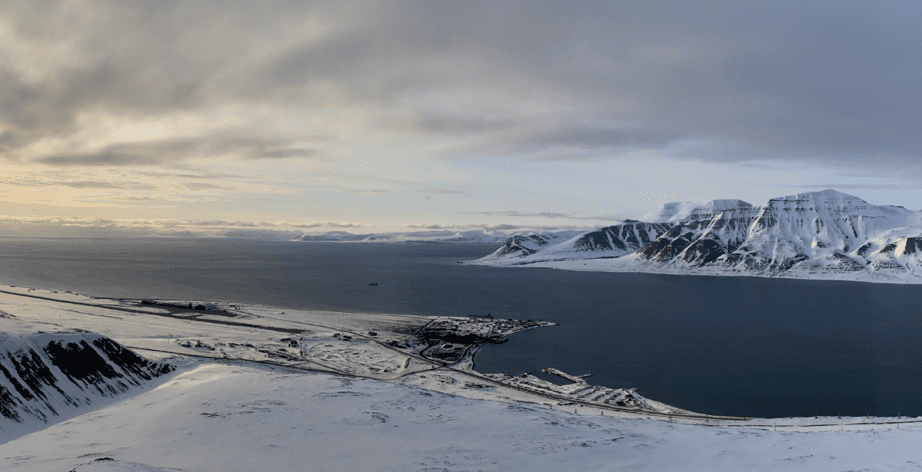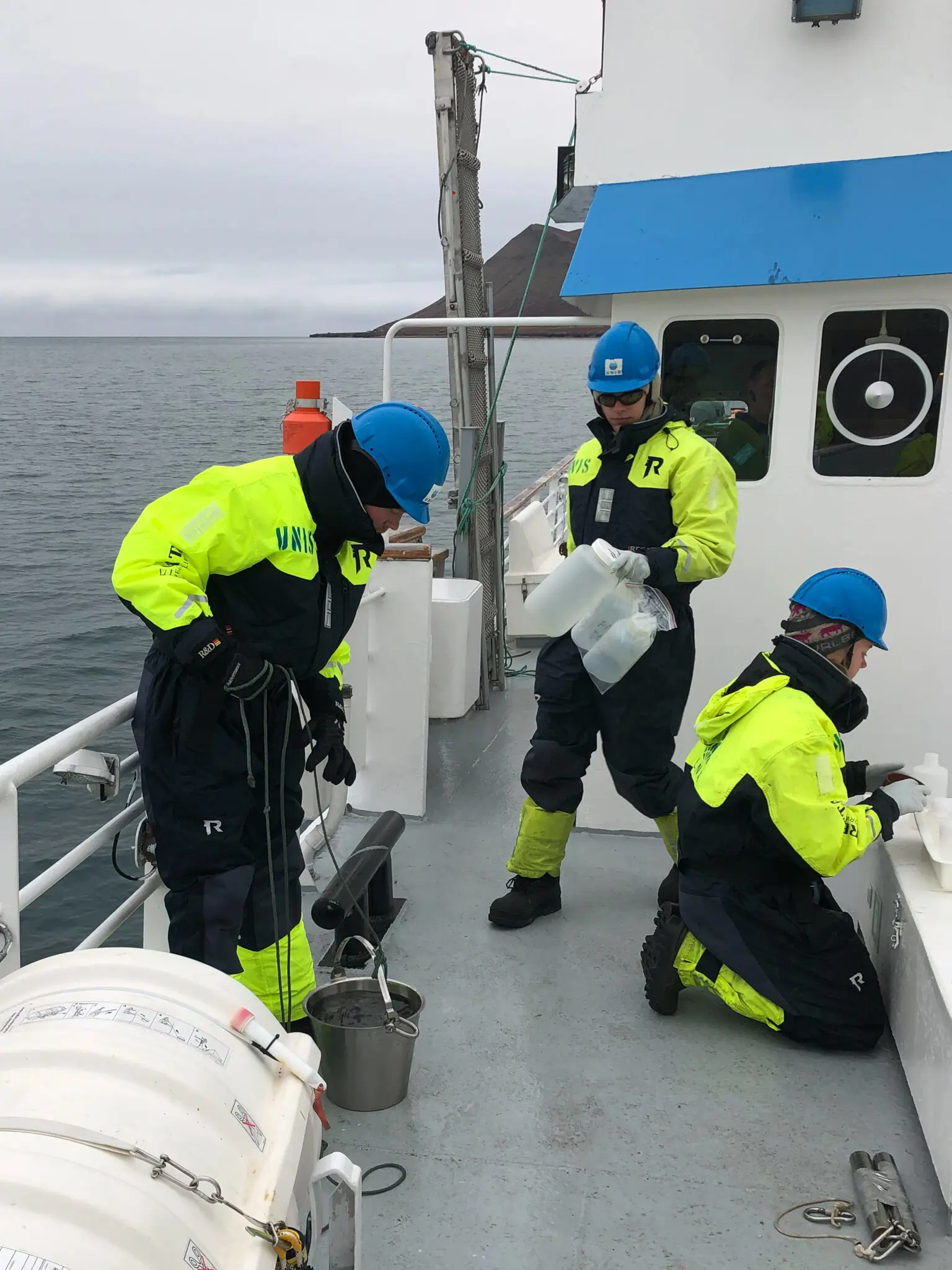Isfjorden Adventfjorden time series
The IsA high Arctic marine time series station is sampled year-round, as a model system for climate change effects on Arctic ecosystems.
active

Sampling at the IsA station in early May 2021 by research vessel Helmer Hanssen. Isfjorden in the background, and Adventfjorden to the right. Photo: Anna Vader
About the project
The Isfjorden Adventfjorden time series (IsA) station in Svalbard experiences periodic inflow of warm water from the North Atlantic. Such “atlantification” is leading to sea ice loss and warmer land temperatures in many areas of the Arctic. At IsA we try to understand the ongoing oceanographic changes and their impact on the arctic marine ecosystem.
How will climate change affect the Arctic marine ecosystem?
Climate change is faster in the Arctic than anywhere else in the world. The major climatic driver in the European part of the Arctic is increased inflow of warm Atlantic Water (“atlantification”). Arctic marine ecosystems are also challenged by increasing marine traffic due to tourism, petroleum and mineral exploration, fisheries and shipping. At IsA we collect baseline data on oceanography, biodiversity and seasonality to assess the vulnerability of arctic marine ecosystems. What is the “normal” seasonal variability in the system? What drives seasonal and inter-annual changes?

Who will be the future winners and losers?
The Arctic light climate is extreme – from the dark polar night when the sun never rises to the perpetual light of the midnight sun. Arctic marine organisms are adapted to this light regime. Inflow of Atlantic Water not only alters the ocean climate, but also brings southern immigrants to the Arctic. At IsA we study microbes and small plankton which are excellent sentinel organisms – too small to escape adverse conditions and responding quickly to their environment. Can local species tolerate warming? Can immigrants survive the dark months of the polar night?

IsA – The world’s northernmost time series
The IsA high Arctic marine time series station is sampled year-round, also during the polar night. This is a time of the year that we, for logistical reasons, know very little about. Frequently sampled time series are crucial for understanding “normal” seasonal variability and teasing this apart from changes caused by climate change or other environmental perturbations. To our knowledge IsA is the only arctic marine station to be sampled frequently year-round.

IsA Facts
- IsA = Isfjorden Adventfjorden time series station
- Located in Svalbard at 78o15’N/15o32E
- Established December 2011
- Sampled weekly-monthly
- Interdisciplinary (oceanography and biology)
- Integrated in UNIS courses and student projects
- Part of BIG – Bjørndalen Integrated Gradients

Map showing the location of IsA in Isfjorden – the largest fjord on the western coast of Spitsbergen. The station is influenced by both Arctic and Atlantic currents, shown in blue (East Spitsbergen Current) and red (West Spitsbergen Current) as well as local processes, e.g. freshwater inflow from rivers and glaciers.




